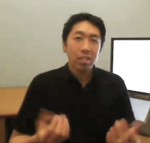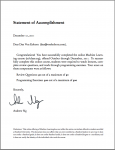Community Embraces New Word Game at Mid-Year Play Day This past Sunday, families at Takoma Park’s Seventh Annual Mid-Year Play Day had the opportunity to experience OtherWordly for the first time. Our educational language game drew curious children and parents to our table throughout the afternoon. Words in Space Several children gathered around our iPads […]
Read moreTag: online course
 Online education can have a real impact in the developing world. Last week, we needed to hire a programmer for a small freelance job. To my surprise, several candidates advertised they had completed programming MOOCs. These were young programmers in their 20’s, in countries like Pakistan and Thailand, who lacked college-level coursework, but are trying to launch freelancing careers based on online courses.
Online education can have a real impact in the developing world. Last week, we needed to hire a programmer for a small freelance job. To my surprise, several candidates advertised they had completed programming MOOCs. These were young programmers in their 20’s, in countries like Pakistan and Thailand, who lacked college-level coursework, but are trying to launch freelancing careers based on online courses.
Online courses and MOOCs may be a poor substitute for in-person learning with a charismatic teacher, but they are light-years better than nothing, and are particularly relevant for higher education and specific skills, when students are self-motivated. (more…)
 Online courses with very large enrollments have rapidly matured in the last two years, led largely by experiments outside mainstream academia by Coursera, Udacity and edX. Ambitious educators, technologists, and funders have created courses on diverse topics, and over five million students worldwide have registered for classes. And 3% have completed the courses. What can we learn? (more…)
Online courses with very large enrollments have rapidly matured in the last two years, led largely by experiments outside mainstream academia by Coursera, Udacity and edX. Ambitious educators, technologists, and funders have created courses on diverse topics, and over five million students worldwide have registered for classes. And 3% have completed the courses. What can we learn? (more…)
 “Being able to teach machine learning to tens of thousands of people is one of the most gratifying experiences I’ve ever had,” says Stanford University computer science professor Andrew Ng.
“Being able to teach machine learning to tens of thousands of people is one of the most gratifying experiences I’ve ever had,” says Stanford University computer science professor Andrew Ng.
Over 100,000 students signed up for his free, fall 2011 course on machine learning. The impacts were huge. Over 12% of the students completed the course, and received a statement of accomplishment. Ng says he “heard many stories from students about how they’re using it at work, about how it’s inspired them to go back to school, and so on.” In contrast, Ng’s normal, for-credit course at Stanford, one of the most popular on campus, would enroll 350 students.
It’s part of a new revolution in higher education, and it’s serious learning. They deliver complete courses where students are not only watching web-based lectures, but also actively participating, doing exercises, and deeply learning the material. Students are expected to devote ~12 hours a week to the course, to read and watch course materials, complete assignments, and take quizzes and an exam. ![]() Online students did not receive one-on-one interaction with professors, the full content of lectures, or a Stanford degree — those who completed the course received a statement of accomplishment. Course materials include prerecorded lectures (with in-video quizzes) and demos, multiple-choice quiz assignments, automatically-checked programming exercises with an interactive workbench, midterm and final exams, a discussion forum, optional additional exercises with solutions, and pointers to readings and resources.
Online students did not receive one-on-one interaction with professors, the full content of lectures, or a Stanford degree — those who completed the course received a statement of accomplishment. Course materials include prerecorded lectures (with in-video quizzes) and demos, multiple-choice quiz assignments, automatically-checked programming exercises with an interactive workbench, midterm and final exams, a discussion forum, optional additional exercises with solutions, and pointers to readings and resources.
Online courses can be a great way to teach (and learn) new skills. They can be small and highly personal, or scale to thousands of students. As followup to my post about “What is an online course?”, let’s look behind the scenes at a few kinds of successful online classes, rich with video, feedback and large amounts of real-world work.
Structuring a course
![]() The Museum of Modern Art (MoMA) currently has six 8 or 10 week online courses. The cost is $200 for self-guided courses, or $350 for instructor-led. The latter enroll 30-45 students. MoMA offers both knowledge classes, e.g., “Modern and Contemporary Art: 1945–1989,” and knowledge/skill courses, e.g., “Materials and Techniques of Postwar Abstract Painting,” in which students do hands-on work at home.
The Museum of Modern Art (MoMA) currently has six 8 or 10 week online courses. The cost is $200 for self-guided courses, or $350 for instructor-led. The latter enroll 30-45 students. MoMA offers both knowledge classes, e.g., “Modern and Contemporary Art: 1945–1989,” and knowledge/skill courses, e.g., “Materials and Techniques of Postwar Abstract Painting,” in which students do hands-on work at home.
The instructor-led classes offer structure, socialization and personalization; whereas, the self-guided courses are about individual freedom, providing access to curated articles and video, with no live instructor facilitation nor social interaction with other students.
 The studio-art offerings have weekly assignments. For example, students paint canvases using the materials and techniques of iconic artists. They photograph their works in progress and finished, and upload them to discuss with other students and the instructor. Wendy Woon directs MoMA’s education department. She feels the 10-week timeframe has worked well for studio art, allowing enough time for a sense of trust and community to develop in the discussion forums so that students are willing to have “critical conversations” criticizing each other’s work.
The studio-art offerings have weekly assignments. For example, students paint canvases using the materials and techniques of iconic artists. They photograph their works in progress and finished, and upload them to discuss with other students and the instructor. Wendy Woon directs MoMA’s education department. She feels the 10-week timeframe has worked well for studio art, allowing enough time for a sense of trust and community to develop in the discussion forums so that students are willing to have “critical conversations” criticizing each other’s work.

“The debate about which is better, face-to-face learning or online learning is fast becoming obsolete,” says Jennifer Berghage, an instructional designer at Pennsylvania State University. The common goal is that “an online course should be, above all, engaging, so that the learner enjoys the learning and is able to not only assimilate it but retain it and apply it.”
Online courses are revolutionizing formal education, and have opened a new genre of outreach on cultural and scientific topics. These courses deliver a series of lessons to a web browser or mobile device, to be conveniently accessed anytime, anyplace. (more…)


